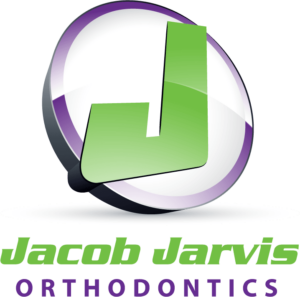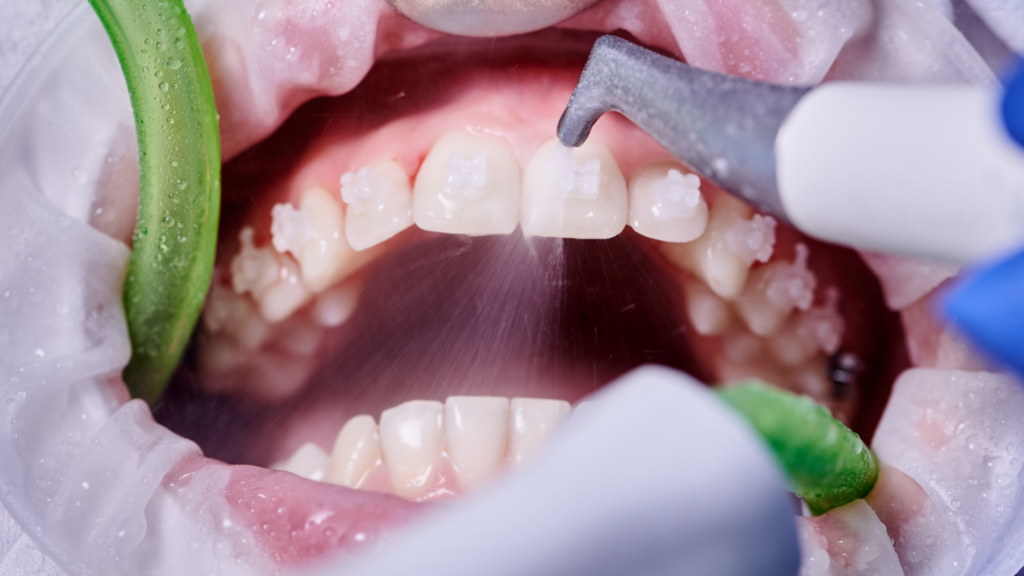Orthodontic treatment plays a crucial role in aligning your child’s teeth for a beautiful, healthy smile. However, maintaining your child’s oral health during orthodontic treatment requires extra care and attention. Braces and other orthodontic appliances create additional spaces where plaque and food particles can accumulate, increasing the risk of cavities and gum disease.
As a parent, you can ensure that your child follows the right hygiene practices, maintains a braces-friendly diet, and visits the orthodontist regularly for checkups. This guide provides essential tips on oral hygiene with braces, dietary recommendations, and professional care to help your child achieve the best results from their orthodontic treatment.
Understanding the Importance of Child’s Oral Health During Orthodontic Treatment
Orthodontic appliances, such as braces, create additional surfaces where food particles and plaque can accumulate. This increases the risk of cavities, gum inflammation (gingivitis), and other oral health issues. Therefore, rigorous orthodontic hygiene for children is crucial. Neglecting proper care can prolong treatment time and compromise the overall results.
Essential Braces Care for Kids: A Step-by-Step Guide
Brushing Techniques:
- Encourage your child to brush their teeth after every meal.
- Use a soft-bristled toothbrush and fluoride toothpaste.
- Brush at a 45-degree angle to clean along the gum line and around brackets and wires.
- Spend at least two minutes brushing, ensuring all surfaces are covered.
- Consider using an interdental brush or orthodontic toothbrush to reach difficult areas.
Flossing with Braces:
- Flossing can be challenging with braces, but it’s essential for removing plaque between teeth.
- Use a floss threader or orthodontic floss to navigate around wires and brackets.
- Floss at least once daily, preferably before bedtime.
Rinsing with Mouthwash:
- A fluoride mouthwash can help strengthen enamel and reduce bacteria.
- Choose an alcohol-free mouthwash to avoid irritation.
- Rinse thoroughly after brushing and flossing.
Choosing a Braces-Friendly Diet
What your child eats plays a significant role in maintaining their oral health during orthodontic treatment. Certain foods can cause damage to braces or increase the risk of cavities.
Foods to Avoid:
- Hard foods like nuts, popcorn, and hard candies (can break brackets)
- Sticky foods such as caramel, gum, and chewy candy (get stuck in braces)
- Sugary drinks like soda and sports drinks (increase plaque buildup)
Braces-Safe Foods:
- Soft fruits like bananas, berries, and cooked apples
- Dairy products such as yogurt and cheese (help neutralize acids)
- Protein-rich foods like eggs, fish, and tender meats
- Soft grains such as pasta, rice, and oatmeal
Encouraging your child to drink plenty of water will also help keep their mouth clean and reduce the risk of decay.
Regular Orthodontic Checkups and Professional Cleanings
Routine visits to the orthodontist are crucial for maintaining your child’s oral health during orthodontic treatment.
Why Regular Orthodontic Visits Matter
- Orthodontists monitor the progress of treatment and make necessary adjustments.
- Any issues, such as broken brackets or wires, can be fixed promptly.
- They provide additional guidance on cleaning techniques and best practices.
Importance of Dental Cleanings
- Professional cleanings remove plaque and tartar buildup that regular brushing might miss.
- Fluoride treatments strengthen enamel and help prevent cavities.
- Orthodontists can identify early signs of gum disease and take preventive action.
- Parents should schedule regular checkups every six months or as recommended by the orthodontist.
Handling Common Orthodontic Issues
Despite the best efforts, children with braces may face some common problems. Here’s how to manage them:
Soreness and Discomfort
- After adjustments, your child may experience mild soreness. Offer soft foods and suggest using orthodontic wax to prevent irritation.
- Over-the-counter pain relievers can help if needed.
Loose or Broken Brackets
- If a bracket becomes loose, contact your orthodontist immediately for advice.
- Until the appointment, avoid chewing on the affected side.
Poking Wires
- If a wire pokes, use a clean cotton swab or orthodontic wax to cover the sharp end.
- Schedule an appointment for the orthodontist to fix it properly.
Encouraging Your Child to Stay Committed to Oral Health
Staying consistent with oral hygiene with braces can be challenging for kids. Here’s how you can help:
- Set reminders for brushing and flossing.
- Provide a travel-size dental kit for school.
- Praise and reward good oral hygiene habits.
- Educate them on the importance of a healthy smile.
A little motivation can go a long way in ensuring your child follows through with their orthodontic care!
A Smile Journey Made Easy: Schedule Your Child’s Orthodontic Checkup Today
The journey of orthodontic treatment is an investment in your child’s future. However, navigating the journey of orthodontic treatment requires a collaborative approach. It’s a partnership built on consistent care, expert guidance, and open communication. Ensuring your child’s oral health during orthodontic treatment is a collective effort, a carefully orchestrated symphony of care played by parents, dedicated orthodontists, and trusted Orthodontists.
You are actively participating in your child’s transformation by establishing and maintaining a robust oral hygiene routine, meticulously following a braces-friendly diet, and adhering to regularly scheduled checkups. These practices are the cornerstones of a successful orthodontic experience, paving the way for a smile that radiates confidence and health.
At Jacob Jarvis Orthodontics, we understand the unique needs of children and teens undergoing orthodontic treatment. Our experienced orthodontists don’t just straighten teeth; they cultivate healthy smiles and foster positive experiences. We specialize in providing personalized, compassionate care, ensuring that every child feels comfortable and confident throughout their journey. From precise braces adjustments to comprehensive oral hygiene guidance, our team is committed to delivering the highest standard of care. We believe that a beautiful smile is more than just aesthetics; it’s a reflection of overall well-being.
Our commitment to your child’s oral health is unwavering. We utilize the latest advancements in orthodontic technology and techniques to ensure efficient and effective treatment. We take the time to understand each patient’s unique needs and create customized treatment plans that align with their goals.
Ready to prioritize your child’s oral health? Schedule a consultation today! Don’t wait to give your child the gift of a healthy, beautiful smile. Take the first step towards a lifetime of confidence. Book an Appointment and let us guide your child on their journey to a radiant smile.
FAQs about Child’s Oral Health During Orthodontic Treatment
Q: How long does orthodontic treatment typically last for children?
A: Treatment duration varies depending on individual needs, but it typically ranges from 12 to 36 months.
Q: Are braces the only orthodontic treatment option for children?
A: No, there are several options, including traditional braces, clear aligners (like Invisalign), and other appliances. The best option depends on your child’s specific needs and the orthodontist’s recommendation.
Q: Can my child still participate in sports while wearing braces?
A: Yes, but it’s crucial to wear a mouthguard to protect their teeth and braces from injury.
Q: How often will my child need to visit the orthodontist for adjustments?
A: Typically, appointments are scheduled every 4 to 8 weeks, but this can vary depending on the treatment plan.
Q: What type of toothbrush is best for children with braces?
A: A soft-bristled toothbrush or an electric toothbrush with an orthodontic brush head is recommended.
Q: Can my child use regular dental floss with braces?
A: Yes, but using a floss threader or orthodontic floss can make it easier to navigate around brackets and wires.
Q: Are there any special mouthwashes recommended for children with braces?
A: A fluoride mouthwash is beneficial, and it’s best to choose an alcohol-free option to avoid irritation.
Q: What are interdental brushes, and how do they help?
A: Interdental brushes are small, specialized brushes that can clean between brackets and wires, removing plaque and food particles that regular brushing might miss.
Q: What happens if my child accidentally eats something hard and breaks a bracket?
A: Contact your orthodontist immediately for repair. Do not attempt to fix it yourself.
Q: Are sugar-free candies and gum safe for children with braces?
A: While sugar-free options are better, sticky or chewy candies and gum should still be avoided,
as they can damage braces.
Q: What are some soft food options for when my child’s mouth is sore after an adjustment?
A: Soft foods like yogurt, mashed potatoes, soup, and smoothies are good options.
Q: How can I help relieve my child’s discomfort after getting braces or adjustments?
A: Rinsing with warm salt water, using orthodontic wax, and taking over-the-counter pain relievers can provide relief.
Q: What should I do if a wire is poking my child’s cheek?
A: Use orthodontic wax to cover the poking wire and contact your orthodontist for an appointment.
Q: Is it normal for my child’s teeth to feel loose during orthodontic treatment?
A: Yes, some tooth mobility is normal during orthodontic treatment as the teeth are being moved.


